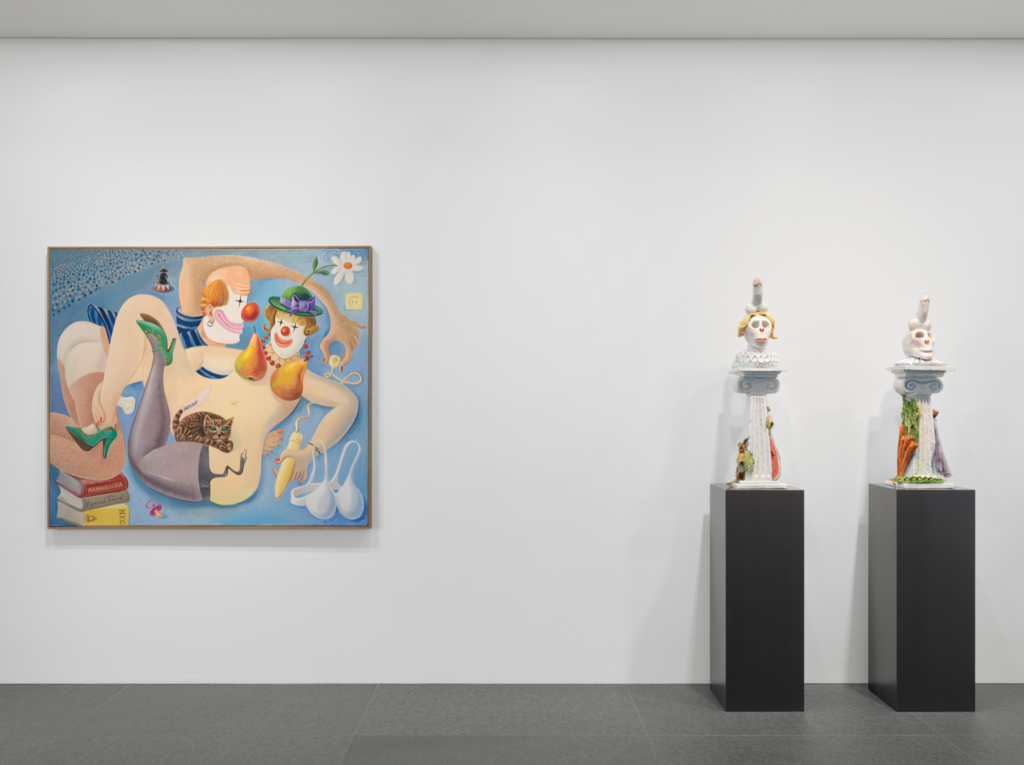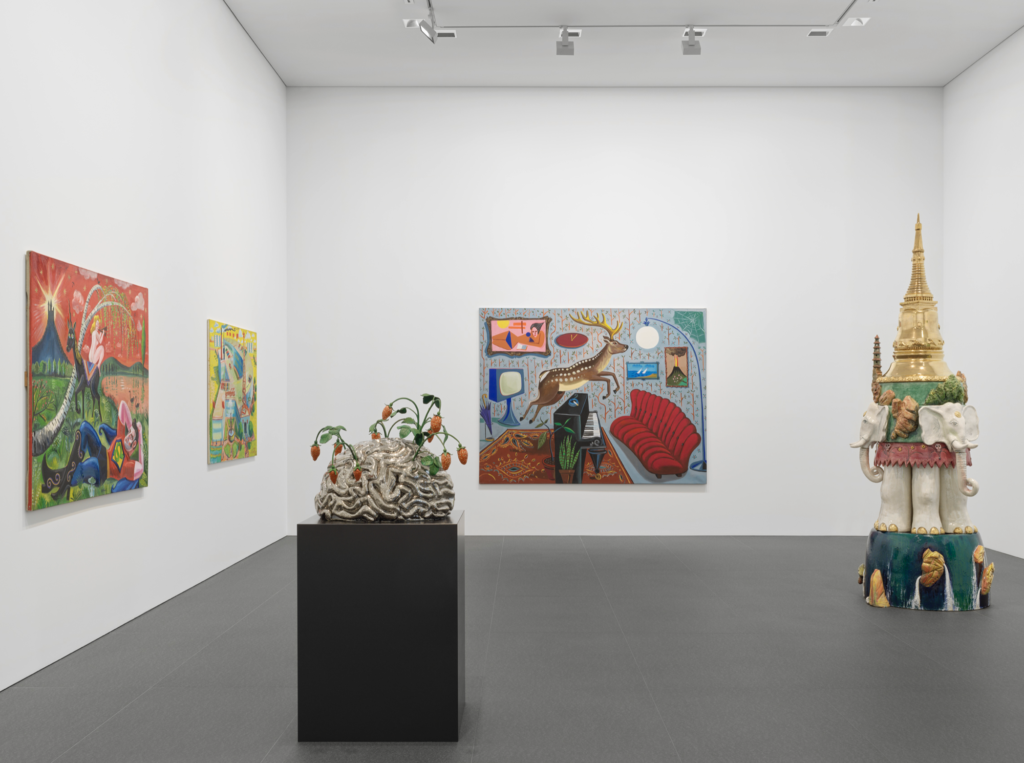Galerie Andrea Caratsch, St.Moritz, 20. Juli – 5. September 2020.
Text by the Gallery – by Samuel Gross: „For some years now Milan Kunc has been living in Prague again, the city where he was born in 1944. Even though he fled to Western Europe, studied at the Kunstakademie Düsseldorf, and then lived mainly in Cologne, Rome, and New York, his heart has always belonged to Prague. Indeed, his entire work is permeated with an energy of the strange, a reality in limbo, and a poetics of mystery, which are also characteristic of the streets of the capital of Bohemia.
This exhibition, which presents an extensive ensemble of paintings and sculptures, makes it possible to perceive the various contours of the geography of Milan Kunc’s work. Even though their techniques are classic (to the extreme of their possible refinement), he performs a balancing act with his works. Since he plays with all energy fields, the artist penetrates into the weak points of our realities. The pictures are simple. They are balanced, fantastical images that are structured at the limits of the possible. They show the logic of a chemical composition and the empirical fragility of an alchemical experiment. Milan Kunc balances between the contemporary and a broader continuum into which he seeks to escape. Like other artists, he too believes that art is a different state of the visible.
In this way, Milan Kunc has always emphasized that our fate is connected to our natural balance. For him, our history is a weak scanning across the entire planet; our ideologies, our wars, our struggles are only a brief flash in comparison to the forces of nature that we can observe. For Milan Kunc it is not a question of juxtaposing culture and nature, but of turning around all the justifications for such a distinction. This determination to play the precise counterpart frees him. The world, its pictures, and all imagined spaces are available to him. He also avoids any chronology, any attempt at narrative and taste. He finds his way back to the possibility of expressing himself as an artist in the traditional sense—rebellious, same time sharp-sighted. In his works he offers us the reading of the world of a cruel optimism.
In 1921, Karel Čapek’s science fiction play R.U.R. (Rozumni Univerzální Roboti) was performed at a theater in Prague and was a sensational success. Quickly translated into numerous languages, it was also performed in New York starting in 1922. In this play the author coined the word robot to refer to machines invented by humans as mechanical doubles. The story is apocalyptic. The biological machines destroy humanity. People almost completely disappear from the surface of the earth; they are destroyed by their doubles. But despite the destructive forces that came to power, the plot finally ends in a love story: the world is saved and repopulated by the love that two machines discover for one another.
All of Milan Kunc’s works seem to express the same thing. Despite the technological and ideological explosion, despite the shameful reluctance that we use to excite ourselves, despite the barriers that we build around our simple sensations and the images of our world, this world will be saved by love, creative power, and art.
Milan Kunc’s work follows in this Prague tradition of a perspective with cheerful pessimism. The artist is in love with his city. He loves to observe nature there, which penetrates into the urban space. He is amazed at the variety of life paths that he crosses. He sharpens his ability for observation in service of a generous worldview.
As with this back and forth between utopia and dystopia, Milan Kunc’s works lead us to take seriously any will to reveal the absurdity of our reality, but they also reassure us of the joy that we could gain from taking stock of it.
Samuel Gross“



